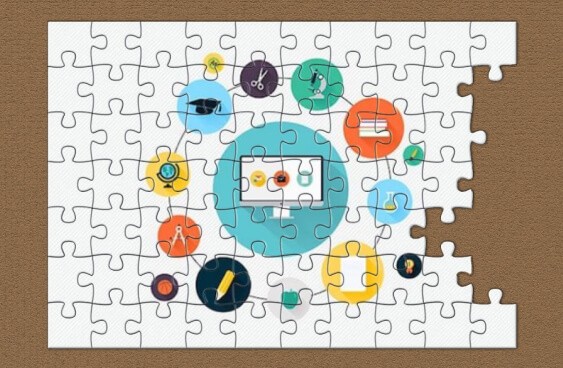Microlearning has been one of the main trends in recent years. Many online schools collect their content into a series of short lessons. They work on the “1 lesson - 1 topic” principle and last up to 15 minutes (up to 10 minutes in some cases). In addition to new knowledge, students receive tasks to reinforce the material.
This approach is reasonably practical. Learners are focused on one topic, receive knowledge in small portions, and constantly use it in practice. Plus, everyone can find 15 minutes for a lesson.
At the same time, there are quite a few myths about this learning format. This article will show the most popular myths about microlearning and why they appeared.
What Is the Microlearning
Before we learn the most common myths about microlearning, let's take a closer look at this concept.
Microlearning is gaining knowledge in small portions. It helps to achieve precise results during the course. Information in such courses is presented clearly and for a specific audience. This approach helps to achieve maximum training efficiency.
Microlearning has several benefits:
- courses provide up-to-date knowledge;
- each lesson is an interactive presentation with tasks;
- listeners can watch the courses at any suitable time.
In addition, focus, context, support, and outcome play a vital role in microlearning. Micro courses help achieve high results due to the "1 lesson - 1 topic" method. Most often, these are webinars, where students are required to repeat specific actions step by step. Research made by Raytheon says that this approach increases long-term engagement by 80%. Moreover, microlearning is more attractive due to its simplicity.
And since microlearning is based on short lessons, they should be suitable for a specific audience and explain the information in simple words.
Now let's take a look at some of the most popular myths in the EdTech industry:
Myth 1. Microlearning Should Not Take Long. The Shorter the Micro Course, the Better the Result
In reality, there are no restrictions on the duration of the micro-course. However, it shouldn't take too long. It will keep up with new trends. Knowledge is becoming outdated quickly, so it is crucial to get quick and easy access to the necessary information.
In addition, there's another argument in favor of the brevity of the micro-course. Josh Bersinv, in his book Digital Learning Revolution: Ten Discoveries, determined that a person can devote 1% of their weekly work time to learning and development. It's about 24 minutes.
And even in such a short period, the student will be distracted from the lesson. Why does it happen? There are several reasons:

- People are forced to multitask. Therefore, they are constantly distracted by messenger notifications, incoming messages, and calls. How long have you been browsing the internet page to the end? According to the Nielsen Norman Group, users read about 20% of words when visiting a web page.
- As the speed of life increases, attention span decreases.
- The longer the lesson lasts, the less information is absorbed. Therefore, the brain needs rest.
- Memory is rather selective. Our brain receives loads of information every day. And in order not to suffer from overload, it focuses only on what is important or exciting. If we don't remember what we ate for breakfast yesterday, then we read very carefully. But at the same time, the brain doesn't always follow our desires.
- The amount of short-term memory is limited. After listening to a two-hour webinar, you are unlikely to remember a lot of information. And if the presentation is supplied with complex concepts, then the percentage of absorption of the material will be much lower.
Microlearning is designed to solve these problems. It's all because it takes less time and provides up-to-date knowledge on any topic. And most importantly, the lesson will end much faster than the following message will come to you in the messenger, or someone will call.
If the knowledge is presented and expressed correctly, it is learned much better than classical methods.
But how short can a micro-course be? The 3-minute limit is often mentioned. Indeed, during this time, you can get a lot of vital information and at the same time not lose interest in the lesson. But if the video is interesting, it can last more than 10 minutes.
At the same time, the BBC conducted a large-scale study of the online education system. According to its results, 94% of listeners prefer to watch educational videos up to 10 minutes long.
To sum up: Save the time of your potential students. After all, it's a precious resource that becomes more expensive.
Myth 2. Microlearning Is Suitable for All Types of Learning
So, far from it. Indeed, it's possible to create a course on a simple topic using a micro-lesson format. Alternatively, offer short lessons as supplementary materials to the main lessons.

However, specific topics take longer to learn. For example, working with complex mechanisms requires a lot of questions and a lot of practice. Therefore microlearning is not suitable here. Also, through micro-courses, it is unlikely that it will be possible to master negotiation skills perfectly.
Also, short lessons aren't suitable for teaching entrepreneurship. You can't understand the context of a business in one 10-minute video. It's best to choose a full-fledged course.
Myth 3. Microlearning Needs Advanced Technology
No advanced technology is required. Everything you need is already on your PC or smartphone. Literally, the spread of high-speed mobile Internet allows people to learn on the go. It is also a plus for the lessons' creators because you no longer need to rent a professional studio with equipment and master editing programs.
There are now full-fledged platforms for creating micro-courses. They work on the principle of "all-in-one" and are always at hand. With their help, you can start your first course in just 30 minutes.
When it comes to quality, total perfectionism is unsuitable here. It is essential for the creator of the micro-course to correctly and simply provide the necessary information. Moreover, user-generated content is very rarely professional. Therefore, amateur video quality is acceptable. It's much worse if the sound quality is poor. In this case, the learner won't listen to the lesson and will turn it off.
When people are looking for important information, they ignore the quality of the photo or video. Therefore, you shouldn't immediately reject the idea of using platforms for recording webinars. The main thing is to evaluate the lesson according to two criteria:
- How accurate and credible is the information?
- Does it solve your problem?
If you doubt the accuracy of the information, it's better to contact the author of the lesson. If the lector is an expert in a specific field, he probably just prepared content on the go. Such information is valuable and helpful to students.
Myth 4. Microlearning Is Only Suitable for Millennials
The creator of the micro-course has an important task - to give people knowledge. However, listeners may be of different generations. For students of one age, one approach is needed. Another age, a different approach.
But age doesn't matter in microlearning because of its adaptability and personalization. Lessons adapt to any listener. Therefore they are suitable for all listeners without exception. However, the issue of age should be considered when developing content, analyzing your target audience.
Myth 5. Microlearning Is a Hype
Hype is any short-term trend that generates public interest. But can micro-courses be called that?
Microlearning in its modern sense appeared in the 1990s. However, there's evidence that this concept first appeared in 1963. Hector Correa used the term microlearning in his book The Economics of Human Resources.
Another person who has analyzed a similar issue is the German psychologist Hermann Ebbinghaus. He is known for his research on information perception and the creation of the so-called "forgetting curve."
Along with this, learning in small portions has always been an essential part of human evolution. Therefore, it has always accompanied humankind for tens of centuries.
The success of micro-courses today is quite simple to explain. The rhythm of life has changed a lot over the past 30 years. We began to do many things (including information consumption) literally on the go, using our smartphones. Microlearning suits the needs of modern society and therefore has received a new cycle of popularity.
Moreover, the speed of life is unlikely to slow down in the next 5-10 years. So, microlearning will not lose its relevance. On the contrary, there will be new types of short lessons combined with high technology (for example, VR).
Myth 6. Micro-courses Are Separate Parts of a Complete Course
It's believed that microlearning uses a popular technique called chunking. It reduces the load on the brain and improves the perception of information. After all, you can take a break after studying a small piece of data.

Breaking down the entire learning course will give us separate pieces of information. They cannot be used independently from each other, only together. In this regard, microlearning compares favorably. After all, short lessons are not only independent blocks of content. Each micro-course has a specific goal and task. After all, as we mentioned before, information is focused on a specific topic.
Myth 7. Microlearning Is Not Suitable for Complex Topics
Micro courses are suitable for topics of any complexity. It's crucial what goals you set before using such a format. If you correctly identify the needs of your target audience and develop a strategy, then microlearning can promote essential knowledge. It doesn't matter how complex the topic is to be explained.
Conclusion
Microlearning has two crucial advantages - speed and efficiency. The main task of this approach is to provide essential knowledge and consolidate it for practical use quickly.
In the field of online education, there are both fans and opponents of short lessons. Each of them presents their arguments. The truth, as usual, lies somewhere in between.
In this article, we've explored seven popular microlearning myths. Now you can create your first micro-course and use the format when it is suitable. It will make microlearning an effective tool for working with your target audience.


